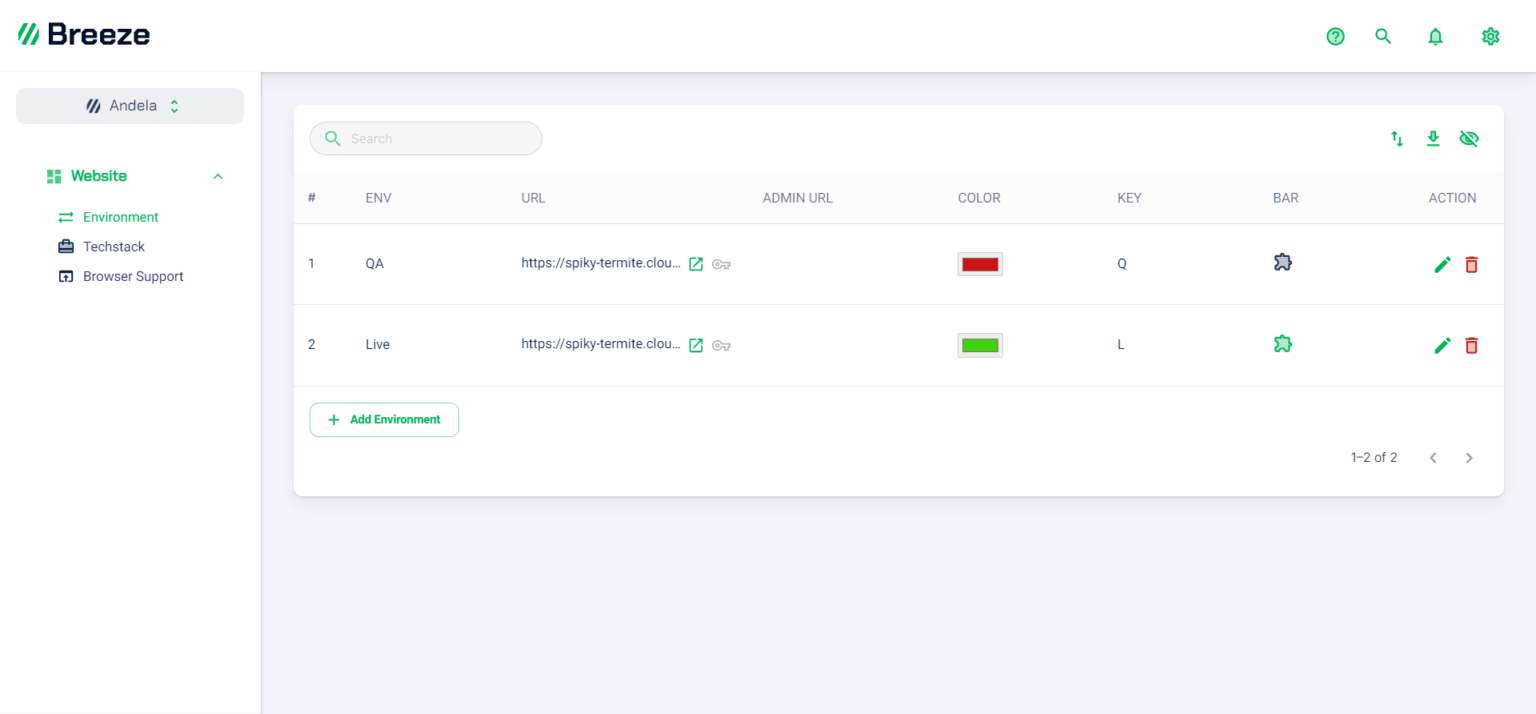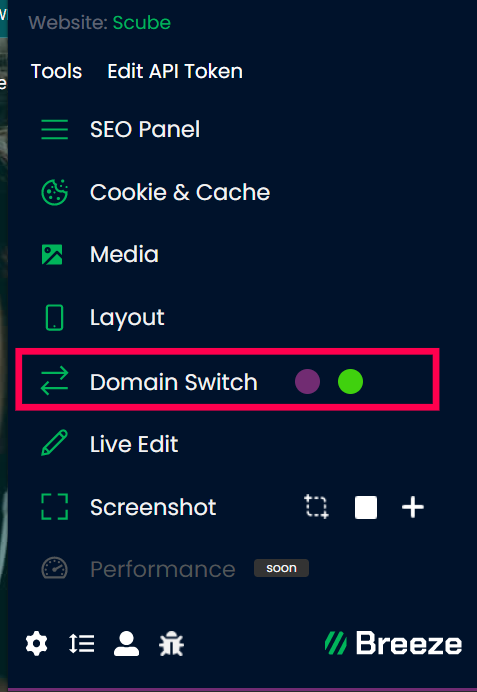Switch Between Environments (UAT, DEV, Etc) In One Click – How To Guide
An environment is a comprehensive website or application stack that includes all that the website or application requires to provide features and content to users. Here is a guide that will assist you in everything you need to know and do to switch environments like UAT, DEV, Live/Production, etc.
Types Of Environments
UAT– UAT includes people from the target audience using the app or the website. The flaws they discover are reported and rectified. This is the circumstance that most closely mirrors “real life.” They can check to confirm everything works as it should.
Dev– Dev environment is a space where developers will make changes without breaking or closing anything on the live environment that viewers can see.
Live– The usage of the Product in a customer environment under normal operating conditions, in accordance with the Product specifications, is referred to as “live environment.”
Advantages Of Using Multiple Environments
Let us look at some of the key reasons for having several environments –
To Ensure Overall Bug-Free Product Distribution
Using multiple environments allows the development, testing, and live aspects of the site to function interdependently without hindering its functionality of each other. Each environment has a purpose and features of its own. In other words, it makes the site tasks more organized and ensures minimum errors.
Enhanced Productivity
Having several environments allows a team to work on different aspects at the same time. Using a different environment for each group of people working on the app helps keep the team engaged if there are several people working on it. Different groups of testers won’t have to wait on each other using this setup. Different groups of testers will not have to be put on hold for each other to finish their work using this setup.
Having numerous environments also minimizes lags caused by resource-intensive operations. Running performance tests, for example, frequently entails simulating and analyzing large amounts of test data. This normally consumes a significant amount of the machine’s processing power and takes a long time to finish. Other testers will be able to access the process if it is isolated to a different Performance testing environment. Other testers will not be affected by the hold-up if the process is separated into a separate Performance testing environment.
Reducing Downtime, Increasing ROI
Protecting your company’s brand has become more important than ever in today’s networked world when news can spread around the world in a matter of seconds. Customers will easily abandon you if your product experiences delay or fail to function properly.
You may give a product to your users that are equally as reliable and dependable as your firm by thoroughly testing software across numerous environments. If the software deals directly with money exchange, flaws in the coding could result in losses. Knight Capital Group, an American global financial services corporation, filed for bankruptcy a few years ago after deploying code to production that resulted in errors that cost them $460 million in less than an hour.
Testing code in an environment that closely resembles the production environment may expose issues that may develop if the code is pushed to production.
Improving Security
You should restrict access to your production data to ensure its integrity. Team members should have roles and access privileges to different sections of the system that are explicitly defined. This is made possible by having numerous environments. Developers can’t unintentionally interfere with or delete production data if they have distinct development and production environments.
It also prevents sensitive data (such as passwords and credit card numbers) from falling into the hands of others. Uber released code to Github a while back that revealed passwords for their live environment, allowing anyone to grab their customer information. This demonstrates why executing development in a production environment is a bad idea.
Saving Time And Geting Your Product To Market Faster
When building software, using several environments saves time because no one has to wait for shared resources from another individual. Running numerous tests at once, rather than one at a time, allows you to complete all of them in a relatively short time.
Using multiple environments not only helps you launch a product as rapidly as possible but also allows you to respond swiftly to customer feedback and make changes to the product.
Working With Different Environments Encourages Innovation
When you work with multiple environments, your team is free to try out new ideas in situations that are specifically designed for it. Because there is no risk of breaking live code, the team can use a separate environment to test ideas and even deploy the code to a server where it can be made available to some test users who can provide feedback, which the team can use to determine whether or not the changes should be implemented on the main codebase.
Why Do Developers Need To Switch Environments Constantly
Developers have multiple priorities of tasks at hand, more often than not. There are various stages of production like development, production, testing, etc. Each stage demands a separate environment. For example- the product is first built in a developer environment, then it’s tested, and then it’s published to the main environment i.e. the production.
For this process, developers need to switch between multiple environments constantly. Now to switch environments, they need to remember the URL, password, etc. and each time typing it out can get confusing. Hence, we bring Breeze as a solution.
Let us see what Breeze has to offer!
Why Breeze?
The maturity of a team has a direct impact on its capacity to deliver high-quality software on schedule. The tools you use may hamper your development efforts. Similarly, the process you follow affects the overall development output.
Having the appropriate tools in place can help you increase your company’s productivity and profitability significantly. One such tool is Breeze. It streamlines the deployment process, freeing up your engineers/developers to focus on what they do best: creating outstanding products. You can save the time spent switching environments, remember passwords, and share between teammates.
Advantages Of Using Breeze To Manage & Switch Environments
Breeze domain environment switcher provides a simple user interface that makes setting up, monitoring, and managing your environments effortless: The Breeze Dashboard allows you to manage all of your operations in one place. You can create users with administrative access to the workflow, organize servers into environments and define configurations for each server and group, monitor each deployment, and rapidly roll back changes if errors arise. Consider doing everything in the interface manually. It would not only waste a lot of time, but it would also be prone to errors.

Colour-coded environments for easy identification
You can create multiple environments with a single click to switch between environments.
Easily shift between live, QA, and UAT environments.
Share the space with your coworkers and freelancing resources.
Add the environment to the WebApp and use the Browser Extension to access it.
Colour-coded to indicate the type of environment you’re working in.
Easy access to environments with Breeze’s Chrome Extension

Isn’t it so cool?
Using Breeze to Help Manage Your Environments
Biggest time saver. When you’re working in several environments, you won’t have to fumble around attempting to recall links and type them out all the time.
This feature enables you to shift from one environment to another with just a click.
The different environments are colour-coded, for your easier understanding. You can view the colour on your SEO panel and Breeze extension.
You can also easily locate errors and rectify them quickly.
Do not wait any further, sign up for Breeze Web App right away!
Also, there’s more you can do with the Breeze Web App. One such cool example is – you can View Browser and OS Reports without Google Analytics in the Breeze App!